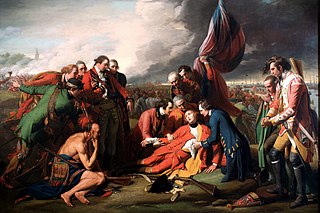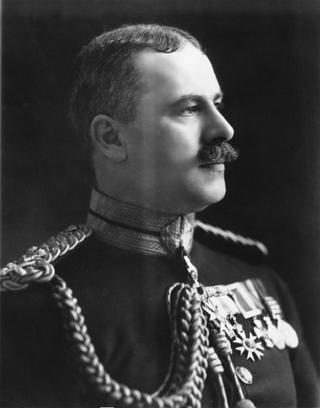Philippe-Louis-Francois Badelard | |
|---|---|
| Born | 25 May 1728 |
| Died | 7 February 1802 (aged 73) |
| Nationality | French, Canadian |
Philippe-Louis-François Badelard (25 May 1728 – 7 February 1802) was an army officer and surgeon from France.
He came to Louisbourg, Cape Breton Island, in 1757. He was the surgeon-major to the troops there and they left that year for Quebec City in New France. Badelard was taken prisoner at the battle of the Plains of Abraham.
Badelard stayed in Canada under the British régime and was surgeon to the Canadian militia. There he eventually found himself in another conflict. The conflict was the defense of Quebec against the Americans and Richard Montgomery in 1775.
In 1776, Badelard became the surgeon to the Quebec garrison but his contribution to Canadian history came through his research of the Baie-Saint-Paul, Quebec malady which was correctly identified as a venereal disease. As a result of his studies of the illness, he wrote one of the first medical articles published in Canada.
Badelard was active and successful in civilian practice as well and served on the Quebec Medical Board for a time. He was considered to be a highly qualified medical man but a person who was hard to get along with; as reports of the time indicate. Louis-Joseph de Montcalm was the most famous Canadian to complain of this characteristic.

Louis Stephen St. Laurent was a Canadian lawyer and politician who served as the 12th prime minister of Canada from 1948 to 1957.

Louis-Joseph de Montcalm-Grozon, Marquis de Montcalm de Saint-Veran was a French soldier best known as the commander of the forces in North America during the Seven Years' War.

Sir Étienne-Paschal Taché was a Canadien doctor, politician, and Father of Confederation. His family had a long history in New France, but suffered serious financial reverses due to the Seven Years' War and the siege of Quebec. He was considered a self-made man, who became a physician, a militia soldier, and a politician. He served twice as joint premier of the Province of Canada.

Louis de Buade, Comte de Frontenac et de Palluau was a French soldier, courtier, and Governor General of New France in North America from 1672 to 1682, and again from 1689 to his death in 1698. He established a number of forts on the Great Lakes and engaged in a series of battles against the English and the Iroquois.
Jean-Louis Roux was a Canadian politician, entertainer and playwright who was briefly the 26th Lieutenant Governor of Quebec.

Events from the 1650s in Canada.

Baie-Saint-Paul is a city in the Province of Quebec, Canada, on the northern shore of the Saint Lawrence River. Baie-Saint-Paul is the seat of Charlevoix Regional County Municipality. The city is situated at the mouth of the Gouffre River. It is known for its art galleries, shops and restaurants.

Sir Charles-Eugène-Napoléon Boucher de Boucherville was a Canadian politician and doctor. He twice served as the premier of Quebec.

Louis-Philippe Brodeur, baptised Louis-Joseph-Alexandre Brodeur was a Canadian journalist, lawyer, politician, federal Cabinet minister, Speaker of the House of Commons of Canada, and puisne justice of the Supreme Court of Canada.

Louis Hébert is widely considered the first European apothecary in the region that would later become Canada, as well as the first European to farm in said region. He was born around 1575 at 129 de la rue Saint-Honoré in Paris to Nicolas Hébert and Jacqueline Pajot. He loved another woman but according to his father's wish he married Marie Rollet on 19 February 1601 at the Church of Saint-Sulpice, Paris.

Michel Sarrazin, was an early Canadian surgeon, physician, scientist and naturalist. Born in Nuits-sous-Beaune in the province of Burgundy, he immigrated at age 25 to the colony of New France as a surgeon. He remained in the colony for the rest of his life, returning to France only during two brief periods. While in New France, his medical skills were constantly in demand, and he quickly rose in the ranks, becoming one of the colonial elite.

Joseph Morrin emigrated from Dumfriesshire, Scotland to Quebec City at the age of four. Since there were no medical schools in the city at the time, Morrin worked as a surgeon's apprentice. He returned to Scotland for a medical education at the University of Edinburgh. He came back to Quebec City upon graduating, where he began working as a doctor at the Hôtel-Dieu de Québec in 1826. In 1845, Morrin helped found the Beauport Asylum with two colleagues and subsequently continued his work as a doctor there. He also played a role in the founding of a major medical school in the city. Morrin served twice as mayor in the 1850s, and was the first democratically elected mayor of the city. At the age of 66 he retired due to poor health.

Pierre Beaubien was a physician and political figure in Canada East, Province of Canada. Trained in medicine in France, he practised and taught medicine in Montreal. He was involved in real estate development in Montreal, contributing to the creation of Outremont. He served two partial terms in the Legislative Assembly, the lower house of the Parliament of the Province of Canada, as a member of the French-Canadian Group under the leadership of Louis-Hippolyte LaFontaine.

François Blanchet was a physician, businessman, seigneur and political figure in Lower Canada.
James Fisher was a physician and political figure in Lower Canada.
François-Xavier Tessier was a doctor, publisher, and political figure in Lower Canada.

Jean-Baptiste Meilleur was a doctor, educator and political figure in Lower Canada, Canada East, and Quebec.

Major-General Sir Marie-Joseph-Eugène Fiset, was a Canadian physician, military officer, Deputy Minister of Militia and Defence, Member of Parliament, the 18th Lieutenant Governor of Quebec, and the 3rd Canadian Surgeon General.
William Holmes (1762–1834), M.D., J.P., was Surgeon-General to the British Forces in Canada; a magistrate and landowner at Quebec.

Edward William Archibald was a Canadian surgeon. Archibald was born in Montreal, Quebec, and received his initial education in Grenoble, France. Upon returning to Canada, he attended McGill University, receiving his Doctor of Medicine there in 1896. Archibald became interested in the specialist field of surgery, and began an apprenticeship at Royal Victoria Hospital. After a year in Europe studying under two well known physicians, the young surgeon was appointed to the staff of the Royal Victoria Hospital's Department of Surgical Pathology. However, Archibald became ill with tuberculosis, and moved to New York City for treatment. Upon his recovery, the surgeon returned to Royal Victoria Hospital. There, he developed what he had learned in Europe, and came to be dubbed Canada's first neurosurgeon.